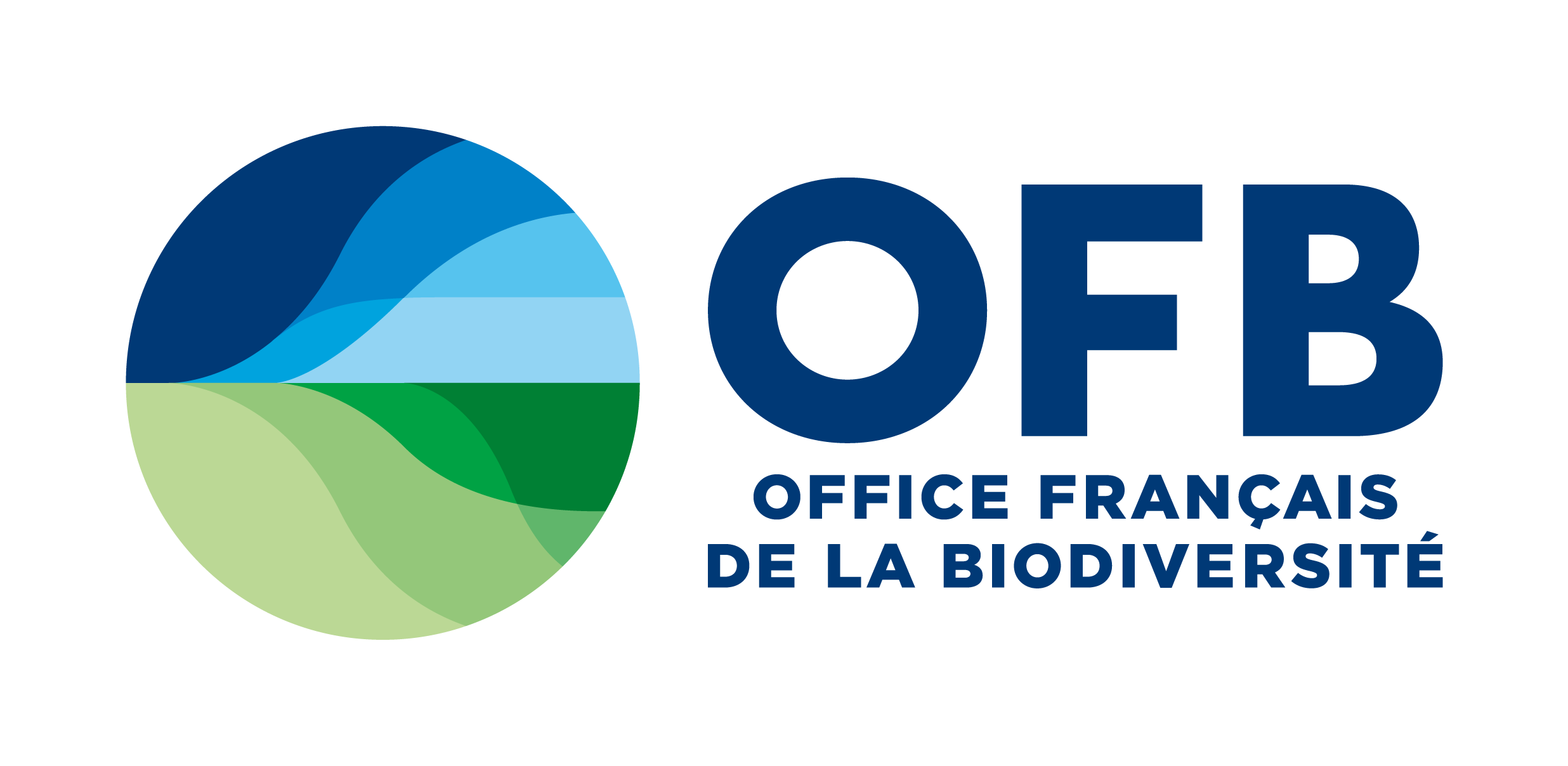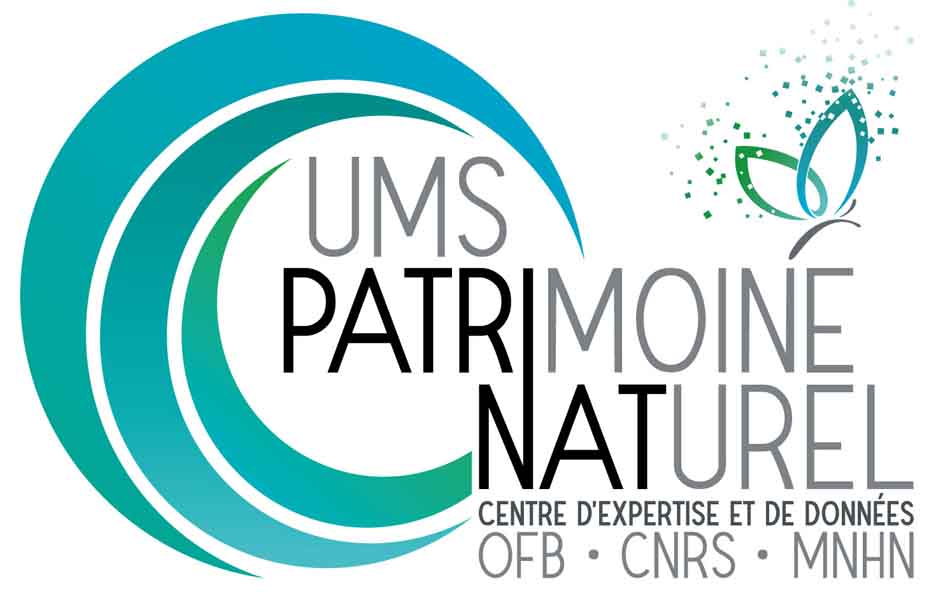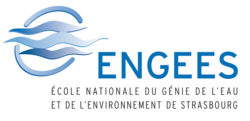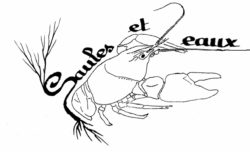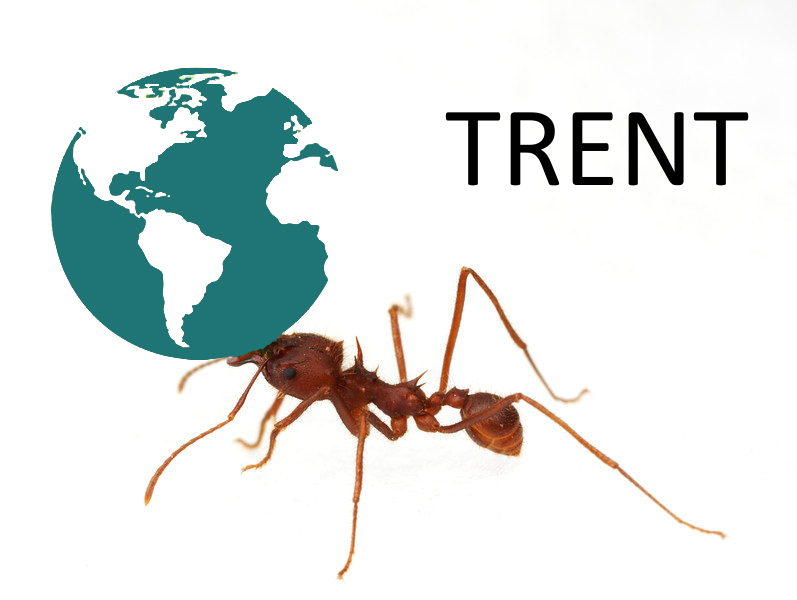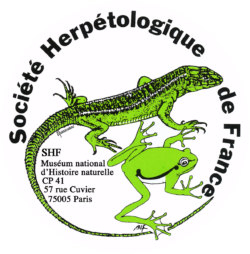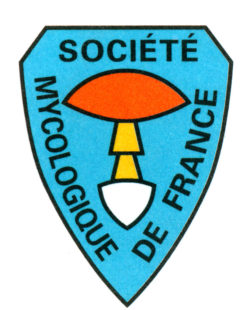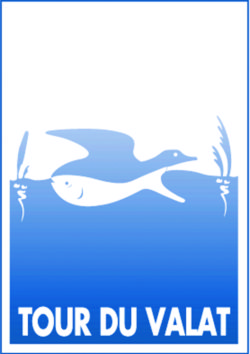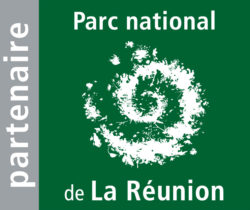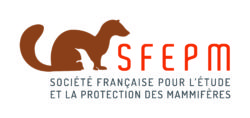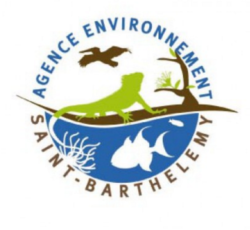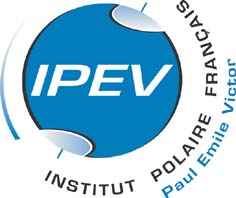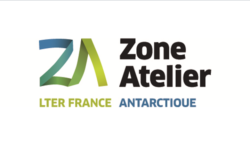Références bibliographiques relatives au groupe des crustacés
Pour rechercher un mot clé dans la page, taper le mot dans l’outil de recherche de votre navigateur.
Ahyong, S. & D. J. Yeo. 2007. Feral populations of the Australian Red-Claw crayfish (Cherax quadricarinatus von Martens) in water supply catchments of Singapore. Biological Invasions 9(8): 943-946. Lire
Almeida, D., & al. 2014. Time-series analysis of native and non-native crayfish dynamics in the Thames River Basin (south-eastern England). Aquatic Conservation: Marine and Freshwater Ecosystems 24(2): 192-202. Lire
Alvsvåg, J., & al. 2009. Evidence for a permanent establishment of the snow crab (Chionoecetes opilio) in the Barents Sea. Biological Invasions 11(3): 587-595. Lire
Anonyme. ?. Guide to marine invaders in the Gulf of Maine. Synidotea laevidorsalis. 2p. Lire
Amat, F., & al. 2005. The American brine shrimp as an exotic invasive species in the western Mediterranean. Biological Invasions 7(1): 37-47. Lire
Aquiloni, L., & al. 2010. Biological control of invasive populations of crayfish: the European eel (Anguilla anguilla) as a predator of Procambarus clarkii. Biological Invasions 12(11): 3817-3824. Lire
Aquiloni, L., & al. 2011. The North American crayfish Procambarus clarkii is the carrier of the oomycete Aphanomyces astaci in Italy. Biological Invasions 13(2): 359-367. Lire
Audzijonyte, A., & al. 2017. Human-mediated lineage admixture in an expanding Ponto-Caspian crustacean species Paramysis lacustris created a novel genetic stock that now occupies European waters. Biological Invasions 19(8): 2443-2457. Lire
Bacela, K., & al. 2009. Reproductive biology of Dikerogammarus haemobaphes: an invasive gammarid (Crustacea: Amphipoda) colonizing running waters in Central Europe. Biological Invasions 11(9): 2055-2066. Lire
Bacela-Spychalska, K., & al. 2012. Microsporidian disease of the invasive amphipod Dikerogammarus villosus and the potential for its transfer to local invertebrate fauna. Biological Invasions 14(9): 1831-1842. Lire
Bacela-Spychalska, K. & Van Der Velde G. 2013. There is more than one ‘killer shrimp’: trophic positions and predatory abilities of invasive amphipods of Ponto-Caspian origin. Freshwater biology 58(4): 730-741. Lire
Bameul, F. 2013. Disparition de Graphoderus bilineatus (Degeer, 1774) (Coleoptera, Dytiscidae) des marais de la Perge causée par l’Ecrevisse américaine à pattes rouges. Bulletin de la Société entomologique de France 118(2): 133-136. Lire
Barbaresi, S. & Gherardi, F. 2000. The Invasion of the Alien Crayfish Procambarus Clarkii in Europe, with Particular Reference to Italy. Biological Invasions 2(3): 259-264. Lire
Barbaresi, S., &al. 2003. Genetic Variability in European Populations of an Invasive American Crayfish: Preliminary Results. Biological Invasions 5(3): 269-274. Lire
Ben Hadj Hamida-Ben Abdallah, O., & al. 2010. First occurrence of the yellow roughneck shrimp, Rimapenaeus similis (Smith, 1885) (Crustacea: Decapoda: Penaeidae) in the Mediterranean Sea (Tunisian waters). Biological Invasions 12(5): 999-1001. Lire
Bertness, M. D. & Tyler, C. 2013. An Invasive Species Facilitates the Recovery of Salt Marsh Ecosystems on Cape Cod. Ecology 94(9): 1937-1943. Lire
Bissattini, A. M. & Vignoli, L. 2017. Let’s eat out, there’s crayfish for dinner: American bullfrog niche shifts inside and outside native ranges and the effect of introduced crayfish. Biological Invasions 19(9): 2633-2646. Lire
Boets, P., & al. 2013. Modelling habitat preference, abundance and species richness of alien macrocrustaceans in surface waters in Flanders (Belgium) using decision trees. Ecological Informatics 17: 73-81. Lire
Boets, P., & al. 2014. Using anf integrated modelling approach for risk assessment of the « killer shrimp » Dikerogammarus villosus. » River Research and Applications 30(4): 403-412. Lire
Boismartel, M., Pommeret, P., Meynard, N. 2011. Guide d’identification des écrevisses en France métropolitaine. Fédération de pêche de Lorraine. 15p. Lire
Bollache, L., Devin, S., Wattier, R., M. Chovet, M., J.-N. Beisel, J.-N., Moreteau, J.-C. & Rigaud, T. 2004. Rapid range extension of the Ponto-Caspian amphipod Dikerogammarus villosus in France: potential consequences. Arch. Hydrobiol. 160(1): 57-66. Lire
Bortolini, J., & al. 2007. On the presence of the Australian redclaw crayfish, Cherax quadricarinatus, in Mexico. Biological Invasions 9(5): 615-620. Lire
Bourdeau, P., & al. 2011. The invasive predator Bythotrephes induces changes in the vertical distribution of native copepods in Lake Michigan. Biological Invasions 13(11): 2533-2545. Lire
Bourdeau, P. E., & al. 2013. Finely tuned response of native prey to an invasive predator in a freshwater system. Ecology 94(7): 1449-1455. Lire
Borza, P., & al. 2017. Success factors and future prospects of Ponto–Caspian peracarid (Crustacea: Malacostraca) invasions: Is ‘the worst over’? Biological Invasions 19(5): 1517-1532. Lire
Branstrator, D., & al. 2006. Range Expansion of Bythotrephes longimanus in North America: Evaluating Habitat Characteristics in the Spread of an Exotic Zooplankter. Biological Invasions 8(6): 1367-1379. Lire
Brousseau, D. J. & L. McSweeney 2016. A comparison of reproductive patterns and adult dispersal in sympatric introduced and native marine crabs: implications for species characteristics of invaders. Biological Invasions 18(5): 1275-1286. Lire
Brousseau, D. J. & Goldberg, R. 2007. Effect of predation by the invasive crab Hemigrapsus sanguineus on recruiting barnacles Semibalanus balanoides in western Long Island Sound, USA. Marine Ecology Progress Series 339: 221-228. Lire
Brown, M. & Branstrator, D. 2011. Patterns in the abundance, phenology, and hatching of the resting egg stage of the invasive zooplankter Bythotrephes longimanus: implications for establishment. Biological Invasions 13(11): 2547-2559. Lire
Bundschuh, M., & al. 2013. Do differences in sensitivity between native and invasive amphipods explain their coexistence in Lake Constance? A case study with lambda-cyhalothrin. Chemosphere 92(5): 483-489. Lire
Burns, C. 2013. Predictors of invasion success by Daphnia species: influence of food, temperature and species identity. Biological Invasions 15(4): 859-869. Lire
Bushek, D. & Boyd, S. 2006. Seasonal Abundance and Occurrence of the Asian Isopod Synidotea laevidorsalis in Delaware Bay, USA. Biological Invasions 8(4): 697-702. Lire
Capinha, C., & al. 2012. Predicting the impact of climate change on the invasive decapods of the Iberian inland waters: an assessment of reliability. Biological Invasions 14(8): 1737-1751. Lire
Capinha, C., & al. 2013. Effects of Climate Change, Invasive Species, and Disease on the Distribution of Native European Crayfishes. Conservation Biology 27(4): 731-740. Lire
Çelik, K., & al. 2002. Predator-Mediated Coexistence of Exotic and Native Crustaceans in a Freshwater Lake? Biological Invasions 4(4): 451-454. Lire
Chapman, J., & al. 2012. An introduced Asian parasite threatens northeastern Pacific estuarine ecosystems. Biological Invasions 14(6): 1221-1236. Lire
Chucholl, C. & F. Wendler 2017. Positive selection of beautiful invaders: long-term persistence and bio-invasion risk of freshwater crayfish in the pet trade. Biological Invasions 19(1): 197-208. Lire
Chucholl, C. 2016. The bad and the super-bad: prioritising the threat of six invasive alien to three imperilled native crayfishes. Biological Invasions 18(7): 1967-1988. Lire
Chucholl, C. 2013. Invaders for sale: trade and determinants of introduction of ornamental freshwater crayfish. Biological Invasions 15(1): 125-141. Lire
Church, K., & al. 2017. Aggressive interactions between two invasive species: the round goby (Neogobius melanostomus) and the spinycheek crayfish (Orconectes limosus). Biological Invasions 19(1): 425-441. Lire
Clinton, K. E., & al. 2018. Substrate preferences of coexisting invasive amphipods, Dikerogammarus villosus and Dikerogammarus haemobaphes, under field and laboratory conditions. Biological Invasions 20(8): 2187-2196. Lire
Cochard, P.-O., Vilisics, F., Sechet, E. 2010. Alien terrestrial crustaceans (Isopods and Amphipods). BioRisk 4(1): 81-96. Lire
Coignet A. , Pinet F., Souty-Grosset C . 2012. Estimating population size of the red swamp crayfish (Procambarus clarkii) in fish-ponds (Brenne, Central France). Knowledge and Management of Aquatic Ecosystems (2012) 406, 02. Lire
Collas, M., Julien, C., & Monnier, D. 2007. La situation des écrevisses en France. Résultats des enquêtes nationales réalisées entre 1977 et 2006 par le conseil supérieur de la pêche. BFPP/Bull. Fr. Pêche Piscic 386: 01-38. Lire
Collas, M., Beinsteiner, D., Fritsch, S., Morelle, S., & L’Hospitallier, M. 2011-2012. Première observation en France de l’Ecrevisse calicot, Orconnectes immunis (Hagen, 1870). Ann. Sci. Rés. Bios. Trans. Vosges du Nord-Pfälzerwald 16: 18-36. Lire
Cordell, J., & al. 2010. Modelling physico-chemical factors affecting occurrences of a non-indigenous planktonic copepod in northeast Pacific estuaries. Biological Invasions 12(5): 1427-1445. Lire
Collas, M., Julien, C., & Monnier, D. 2007. Résultats de l’enquête nationale réalisée en 2006 par le Conseil Supérieur de la Pêche., Conseil Supérieur de la Pêche, Délégation régionale de Metz: 42 pp. Lire
Coverdale, T. C., & al. 2013. New England Salt Marsh Recovery: Opportunistic Colonization of an Invasive Species and Its Non-Consumptive Effects. PLoS ONE 8(8): e73823. Lire
Cruz, J., & al. 2017. Long-term impacts of an introduced ungulate in native grasslands: Himalayan tahr (Hemitragus jemlahicus) in New Zealand’s Southern Alps. Biological Invasions 19(1): 339-349. Lire
Cuesta, J. A. & al. 2016. Role of ships’ hull fouling and tropicalization process on European carcinofauna: new records in Galicia waters (NW Spain). Biological Invasions 18(3): 619-630. Lire
Dalosto, MM., Palaoro, AV., Souty-Grosset, C., Bueno, SLS., Loureiro, TG., Almerão, MP., Araujo, PB., & Santos, S. 2015. One step ahead of the enemy: investigating aggressive interactions between invasive and native crayfish before the contact in nature. Biological Invasions 17 (12):3503-3515. DOI 10.1007/s10530-015-0974-4. Lire
Damien J.-P., G., A. 2009. Faire face à Procambarus clarkii et aux écrevisses invasives, actes de la journée d’étude organisée par le Parc naturel régional de Brière, Saint-André-des-Eaux. 148 pp.
Davidson, T. M., & al. 2008. Distribution, density, and habitat use among native and introduced populations of the Australasian burrowing isopod Sphaeroma quoianum. Biological Invasions 10(4): 399-410. Lire
Davidson, T. M., & al. 2010. The composition and density of fauna utilizing burrow microhabitats created by a non-native burrowing crustacean (Sphaeroma quoianum). Biological Invasions 12(5): 1403-1413. Lire
De Rivera, C. E., &al. 2005. Biotic resitance to invasion: native predator limits abundance and distribution of an introduced crab. Ecology 86(12): 3364-3376. Lire
Devin, S. & J.-N. Beisel. 2006. Biological and ecological characteristics of invasive species: a gammarid study. Biological Invasions 9(1): 13-24. Lire
Dick, J. T. A., & al. 2013. Natural born killers: an invasive amphipod is predatory throughout its life-history. Biological Invasions 15(2): 309-313. Lire
Doherty-Bone, T. M., & al. 2018. Transformation of detritus by a European native and two invasive alien freshwater decapods. Biological Invasions 20(7): 1799-1808. Lire
Drake, J. M., & al. 2006. Demographic Stochasticity, Environmental Variability, and Windows of Invasion Risk for Bythotrephes Longimanus in North America. Biological Invasions 8(4): 843-861. Lire
Dresser, C. & Swanson, B. 2012. Preemptive legislation inhibits the anthropogenic spread of an aquatic invasive species, the rusty crayfish (Orconectes rusticus). Biological Invasions 15(5): 1049-1056. Lire
Dubé, J.-F., Desroches, F. 2007. Les écrevisses du Québec. Biologie, identification et répartition géographique, Ministère des ressources naturelles et de la faune. Direction de l’aménagement de la faune de l’Estrie, de Montréal et de la Montérégie: 74 pp. Lire
Dunn, J. C., & al. 2008. Competition and parasitism in the native White Clawed Crayfish Austropotamobius pallipes and the invasive Signal Crayfish Pacifastacus leniusculus in the UK. Biological Invasions 11(2): 315-324. Lire
Duperray, T., Besnard, A., Dugueperoux, F. 2013. Protocole d’éradication de l’écrevisse de Californie par stérilisation mécanique des males : bilan des expérimentations en milieu naturel. In « 1ères Rencontres Françaises sur les Ecrevisses Exotiques Invasives ». Actes du colloque sciences et gestion, 19 et 20 juin 2013, Saint Lyphard, 111-118 (aestuaria).
Duperray, T. 2013. De nouveaux outils pour prélever et gérer les populations d’écrevisses invasives. In « 1ères Rencontres Françaises sur les Ecrevisses Exotiques Invasives ». Actes du colloque sciences et gestion, 19 et 20 juin 2013, Saint Lyphard, 143-148 (aestuaria).
Duperray, T. 2009. Eradiquer Pacifastacus leniusculus par stérilisation mécanique des mâles. In « Faire face à Procambarus clarkii et aux écrevisses invasives » Actes de la journées d’études organisée par le PNR de Brière le 2 février 2009, Saint André des Eaux, 108-111 (aestuaria).
Dybdahl, M. F. & Drown, D. M. 2012. Response to comments on The absence of genotypic diversity in a successful parthenogenetic invader. [Biological Invasions 13 (2011), 1663–1672]. Biological Invasions 14(8): 1647-1649. Lire
Emmett, R. L., & al. 2002. Introduction of a Siberian Freshwater Shrimp to Western North America. Biological Invasions 4(4): 447-450. Lire ![]()
Epifanio, C. E., & al. 2013. Abundance of Invasive and Native Crab Larvae in the Mouth of Delaware Bay: Hemigrapsus sanguineus and Uca Pugnax. Journal of Shellfish Research 32(2): 543-550. Lire ![]()
Falasco, E., & al. 2018. Diatoms prefer strangers: non-indigenous crayfish host completely different epizoic algal diatom communities from sympatric native species. Biological Invasions 20(10): 2767-2776. Lire ![]()
Filipe, A. F., & al. 2017. Geostatistical distribution modelling of two invasive crayfish across dendritic stream networks. Biological Invasions 19(10): 2899-2912. Lire ![]()
Filipová, L., & al. 2009. Cryptic diversity within the invasive virile crayfish Orconectes virilis (Hagen, 1870) species complex: new lineages recorded in both native and introduced ranges. Biological Invasions 12(5): 983-989. Lire ![]()
Forsström, T., & al. 2015. An introduced species meets the local fauna: predatory behavior of the crab Rhithropanopeus harrisii in the Northern Baltic Sea. Biological Invasions 17(9): 2729-2741. Lire ![]()
Freeman, A. S., & al. 2016. Estuarine fouling communities are dominated by nonindigenous species in the presence of an invasive crab. Biological Invasions 18(6): 1653-1665. Lire ![]()
Freeman, A. S., & al. 2013. A gastropod’s induced behavioral and morphological responses to invasive Carcinus maenas in Australia indicate a lack of novelty advantage. Biological Invasions 15(8): 1795-1805. Lire ![]()
Frisch, D., & al. 2012. The invasion history of the exotic freshwater zooplankter Daphnia lumholtzi (Cladocera, Crustacea) in North America: a genetic analysis. Biological Invasions 15(4): 817-828. Lire ![]()
Gabel, F., & al. 2011. Differential effect of wave stress on the physiology and behaviour of native versus non-native benthic invertebrates. Biological Invasions 13(8): 1843-1853. Lire ![]()
Gallagher, M. C., & al. 2016. Room for one more? Coexistence of native and non-indigenous barnacle species. Biological Invasions 18(10): 3033-3046. Lire ![]()
Gallardo, B., & al. 2016. Trans-national horizon scanning for invasive non-native species: a case study in western Europe. Biological Invasions 18(1): 17-30. Lire ![]()
Gallardo, B., & al. 2011. Application of bioclimatic models coupled with network analysis for risk assessment of the killer shrimp, Dikerogammarus villosus, in Great Britain. Biological Invasions 14(6): 126 5-1278. Lire ![]()
Gallardo, B. & Aldridge, D. C. 2013. Evaluating the combined threat of climate change and biological invasions on endangered species. Biological Conservation 160: 225-233. Lire ![]()
Gerard, V. A., & al. 1999. Potential Impacts of a Western Pacific Grapsid Crab on Intertidal Communities of the Northwestern Atlantic Ocean. Biological Invasions 1(4): 353-361. Lire ![]()
Gherardi F., Coignet A., Souty-Grosset C., Spigoli D., Aquiloni L. 2013. Global warming and the agonistic behaviour of invasive crayfishes in Europe. Freshwater Biology 58:1958-1967. Lire![]()
Gherardi, F., & al. 2013. Climate warming and the agonistic behaviour of invasive crayfishes in Europe. Freshwater biology 58(9): 1958-1967. Lire ![]()
Gergs, R., & al. 2013. Different ammonia tolerances may facilitate spatial coexistence of Gammarus roeselii and the strong invader Dikerogammarus villosus. Biological Invasions 15(8): 1783-1793. Lire ![]()
Girdner, S. F., & al. 2018. Replacement of a unique population of newts (Taricha granulosa mazamae) by introduced signal crayfish (Pacifastacus leniusculus) in Crater Lake, Oregon. Biological Invasions 20(3): 721-740. Lire ![]()
Goedknegt, M. A., & al. 2017. Spillover but no spillback of two invasive parasitic copepods from invasive Pacific oysters (Crassostrea gigas) to native bivalve hosts. Biological Invasions 19(1): 365-379. Lire ![]()
Gonçalves, V., Rebelo, R. & Gherardi, F. 2013. Fouling of invasive red swamp crayfish, Procambarus clarkii (Girard, 1852) by the zebra mussel, Dreissena polymorpha (Pallas, 1771) in Lake Trasimeno, Italy. Aquatic Invasions 8(1): 117-120. Lire ![]()
González-Ortegón, E., & al. 2009. Assessment of the interaction between the white shrimp, Palaemon longirostris, and the exotic oriental shrimp, Palaemon macrodactylus, in a European estuary (SW Spain). Biological Invasions 12(6): 1731-1745. Lire ![]()
Gouillieux, B., & al. 2015. Three non-indigenous species of Aoroides (Crustacea: Amphipoda: Aoridae) from the French Atlantic coast. Journal of the Marine Biological Association of the United Kingdom 96(8): 1651-1659. Lire ![]()
Griffen, B. D. & Riley, M. E. 2015. Potential impacts of invasive crabs on one life history strategy of native rock crabs in the Gulf of Maine. Biological Invasions 17(9): 2533-2544. Lire ![]()
Gribben, P. E., & al. 2013. Biogeographic comparisons of the traits and abundance of an invasive crab throughout its native and invasive ranges. Biological Invasions 15(8): 1877-1885. Lire ![]()
Griffen, B. D., & al. 2012. The role of foraging in the success of invasive Asian shore crabs in New England. Biological Invasions 14(12): 2545-2558. Lire ![]()
Griffen, B. D. 2013. Linking individual diet variation and fecundity in an omnivorous marine consumer. Oecologia 174(1): 121-130. Lire ![]()
Griffen, B. D. & J. E. Byers. 2008. Community impacts of two invasive crabs: the interactive roles of density, prey recruitment, and indirect effects. Biological Invasions 11(4): 927-940. Lire ![]()
Gust, N. & G. J. Inglis. 2006. Adaptive Multi-scale Sampling to Determine an Invasive Crab’s Habitat Usage and Range in New Zealand. Biological Invasions 8(2): 339-353. Lire![]()
Haarr, M. L. & R. Rochette. 2012. The effect of geographic origin on interactions between adult invasive green crabs Carcinus maenas and juvenile American lobsters Homarus americanus in Atlantic Canada. Journal of Experimental Marine Biology and Ecology 422–423: 88-100. Lire ![]()
Hazlett, B. A. 2000.Information use by an Invading Species: Do Invaders Respond More to Alarm Odors than Native Species? Biological Invasions 2(4): 289-294. Lire ![]()
Harris, A., & al. 2017. Molecular identification of the precise geographic origins of an invasive shrimp species in a globally significant Australian biodiversity hotspot. Biological Invasions 19(2): 463-468. Lire ![]()
Hellmann, C., & al. 2017. River-specific effects of the invasive amphipod Dikerogammarus villosus (Crustacea: Amphipoda) on benthic communities. Biological Invasions 19(1): 381-398. Lire ![]()
Hesselschwerdt, J., & al. 2009. A local gammarid uses kairomones to avoid predation by the invasive crustaceans Dikerogammarus villosus and Orconectes limosus. Biological Invasions 11(9): 2133-2140. Lire ![]()
Hewitt, M. J. Mc Donald., J. I. 2013. The efficacy of crab condos in capturing small crab species and their use in invasive marine species monitoring. Management of Biological Invasions 4(2): 149-153. Lire ![]()
Hidalgo, F. J., & al. 2005. A prediction come true: the green crab invades the Patagonian coast. Biological Invasions 7(3): 547-552. Lire ![]()
Hobbs, N.-V. S., & al. 2017. Conspecific tolerance and heterospecific competition as mechanisms for overcoming resistance to invasion by an intertidal crab. Biological Invasions 19(3): 765-772. Lire ![]()
Hohenadler, M. A. A., & al. 2018. Pomphorhynchus laevis: An invasive species in the river Rhine? Biological Invasions 20(1): 207-217. Lire ![]()
Holdich, D. M., & al. 2009. A review of the ever increasing threat to European crayfish from non-indigenous crayfish species. Knowl. Managt. Aquatic Ecosyst.(394-395): 11. Lire![]()
Hollebone, A. L. & Hay, M. E. 2007. An invasive crab alters interaction webs in a marine community. Biological Invasions 10(3): 347-358. Lire ![]()
Hudina, S., & al. 2015. Differences in aggressive behaviour along the expanding range of an invasive crayfish: an important component of invasion dynamics. Biological Invasions 17(11): 3101-3112. Lire ![]()
Hudina, S., & al. 2011. Competitive interactions between co-occurring invaders: identifying asymmetries between two invasive crayfish species. Biological Invasions 13(8): 1791-1803. Lire ![]()
Hunt, C. E. & Yamada, S. B. 2003. Biotic resistance experienced by an invasive crustacean in a temperate estuary. Biological Invasions 5(1): 33-43. Lire ![]()
Hupało, K., & al. 2018. Climate change as a possible driver of invasion and differential in HSP70 expression in two genetically distinct populations of the invasive killer shrimp, Dikerogammarus villosus. Biological Invasions 20(8): 2047-2059. Lire ![]()
Iltis, C., & al. 2018. Parasitism may alter functional response comparisons: a case study on the killer shrimp Dikerogammarus villosus and two non-invasive gammarids. Biological Invasions 20(3): 619-632. Lire ![]()
Jaimie, T. A. D. & D. Platvoet. 2000. Invading Predatory Crustacean Dikerogammarus villosus Eliminates Both Native and Exotic Species. Proceedings: Biological Sciences 267(1447): 977-983. Lire ![]()
Jokela, A., & al. 2017. Biotic resistance of impact: a native predator (Chaoborus) influences the impact of an invasive predator (Bythotrephes) in temperate lakes. Biological Invasions 19(5): 1495-1515. Lire ![]()
Jormalainen, V., & al. 2016. The invasive mud crab enforces a major shift in a rocky littoral invertebrate community of the Baltic Sea. Biological Invasions 18(5): 1409-1419. Lire ![]()
Jourdan, J. & al. 2016. Pronounced species turnover, but no functional equivalence in leaf consumption of invasive amphipods in the river Rhine. Biological Invasions 18(3): 763-774. Lire ![]()
Jourde, J., Sauriau, P.-G., Guenneteau, S. & Caillot. E. 2013. First record of Grandidierella japonica Stephensen, 1938 (Amphipoda: Aoridae) from mainland Europe. BioInvasions Records 2. Lire ![]()
Kaldre, K., & al. 2017. First records of the non-indigenous signal crayfish (Pacifastacus leniusculus) and its threat to noble crayfish (Astacus astacus) populations in Estonia. Biological Invasions 19(10): 2771-2776. Lire ![]()
Kelly, N. E., & al. 2012. Recreational boats as a vector of secondary spread for aquatic invasive species and native crustacean zooplankton. Biological Invasions 15(3): 509-519. Lire ![]()
Kerfoot, W. C., & al. 2016. A plague of waterfleas (Bythotrephes): impacts on microcrustacean community structure, seasonal biomass, and secondary production in a large inland-lake complex. Biological Invasions 18(4): 1121-1145. Lire ![]()
Kestrup, Å. M. & Ricciardi, A. 2009. Environmental heterogeneity limits the local dominance of an invasive freshwater crustacean. Biological Invasions 11(9): 2095-2105. Lire ![]()
Kestrup, A. M.,& al. 2011. Interactions between invasive and native crustaceans: differential functional responses of intraguild predators towards juvenile hetero-specifics. Biological Invasions 13(3): 731-737. Lire ![]()
Kestrup, Å. M., & al. 2010. Differential infection of exotic and native freshwater amphipods by a parasitic water mold in the St. Lawrence River. Biological Invasions 13(3): 769-779. Lire ![]()
Kobak, J., & al. 2016. Conquerors or exiles? Impact of interference competition among invasive Ponto-Caspian gammarideans on their dispersal rates. Biological Invasions 18(7): 1953-1965. Lire ![]()
Klotz, W., Wilhelm Miesen, F., Hüllen, S. & Herder, F. 2013. Two Asian fresh water shrimp species found in a thermally polluted stream system in North Rhine-Westphalia, Germany. Aquatic Invasions 8: 7 pp. Lire ![]()
Koenders, A., & al. 2012. Cryptic species of the Eucypris virens species complex (Ostracoda, Crustacea) from Europe have invaded Western Australia. Biological Invasions 14(10): 2187-2201. Lire ![]()
Koike, F. & Iwasaki, K. 2010. A simple range expansion model of multiple pathways: the case of nonindigenous green crab Carcinus aestuarii in Japanese waters. Biological Invasions 13(2): 459-470. Lire ![]()
Kotta, J., & al. 2014. Relationships between mechanical disturbance and biomass of the invasive amphipod Gammarus tigrinus within a charophyte-dominated macrophyte community. Marine Ecology 35: 11-18. Lire ![]()
Kruse, I., & al. 2011. Genetic relationships of the marine invasive crab parasite Loxothylacus panopaei: an analysis of DNA sequence variation, host specificity, and distributional range. Biological Invasions 14(3): 701-715. Lire ![]()
Lallias, D., & al. 2015. Invasion genetics of the Pacific oyster Crassostrea gigas in the British Isles inferred from microsatellite and mitochondrial markers. Biological Invasions 17(9): 2581-2595. Lire ![]()
Larson, E. R. & Magoulick, D. D. 2008. Does juvenile competition explain displacement of a native crayfish by an introduced crayfish? Biological Invasions 11(3): 725-735. Lire ![]()
Lehtonen, T. K., & al. 2018. The impact of an invasive mud crab on brood success of nest-building fish in the Northern Baltic Sea. Biological Invasions 20(4): 981-993. Lire ![]()
Lewis, P. N., & al. 2006. Barging in: A Temperate Marine Community Travels to the Subantarctic. Biological Invasions 8(4): 787-795. Lire ![]()
Light, T. 2005. Behavioral effects of invaders: alien crayfish and native sculpin in a California stream. Biological Invasions 7(3): 353-367. Lire ![]()
Liu, G., & al. 2013. Population Genetic Structure of the Invasive Red Swamp Crayfish in China Revealed by ITS1 Variation. Biochemical Genetics 51(11): 841-852. Lire ![]()
Lord, J. P. 2017. Potential impact of the Asian shore crab Hemigrapsus sanguineus on native northeast Pacific crabs. Biological Invasions 19(6): 1879-1887. Lire ![]()
Lord, J.P. & Williams L.M. 2017. Increase in density of genetically diverse invasive Asian shore crab (Hemigrapsus sanguineus) populations in the Gulf of Maine. Biological Invasions 19:1153–1168. Lire ![]()
Loureiro, T. G.; Anastácio, P. M. S. G.; Araujo, P. B.; Souty-Grosset, C.; Almerão, M. P.2015. Red Swamp crayfish: Biology, ecology and invasion- an overview. 2015. Nauplius The journal of the Brazilian Crustacean Society. Volume 23 (1), 1-19. Lire ![]()
Loureiro, T. G., Anastácio, P. M. S. G, Bueno S.L de S, Araujo, P. B., Souty-Grosset, C., Almerão, M. P. 2015. Distribution, introduction pathway and invasion risk analysis of the North American crayfish Procambarus clarkii (Decapoda, Cambaridae) in Southeast Brazil. Journal of Crustacean Biology, 35 (1) 88-96. Lire ![]()
Lovas‐Kiss, Á., & al. 2018. Crayfish invasion facilitates dispersal of plants and invertebrates by gulls. Freshwater Biology 63(4): 392-404. Lire ![]()
Makino, W., et al. 2018. Evidence of multiple introductions and genetic admixture of the Asian brush-clawed shore crab Hemigrapsus takanoi (Decapoda: Brachyura: Varunidae) along the Northern European coast. Biological Invasions 20(4): 825-842. Lire ![]()
Mathers, K. L., & al. 2018. Temporal variability in lotic macroinvertebrate communities associated with invasive signal crayfish (Pacifastacus leniusculus) activity levels and substrate character. Biological Invasions 20(3): 567-582. Lire ![]()
Médoc, V., & al. 2018. Opportunistic omnivory impairs our ability to predict invasive species impacts from functional response comparisons. Biological Invasions 20(5): 1307-1319. Lire ![]()
Médoc, V., & al. 2015. Functional response comparisons among freshwater amphipods: ratio-dependence and higher predation for Gammarus pulex compared to the non-natives Dikerogammarus villosus and Echinogammarus berilloni. Biological Invasions 17(12): 3625-3637. Lire ![]()
Mestre, A.,& al. 2016. Contrasting patterns of genetic diversity and spatial structure in an invasive symbiont-host association. Biological Invasions 18(11): 3175-3191. Lire ![]()
Morin, R. 2003. Élevage de l’écrevisse. Document d’information DADD-21. Ministère de l’Agriculture, des Pêcheries et de l’Alimentation : 7. Lire ![]()
Miller, D. H., & al. 2010. Application of a lower food web ecosystem productivity model for investigating dynamics of the invasive species Bythotrephes longimanus in Lake Michigan. Biological Invasions 12(10): 3513-3524. Lire ![]()
Musseau, C. Boulenger, C. Crivelli, A.-j. Lebel, I. Pascal, M. Bouletreau, S. Santoul, F., 2015. Native European eels as a potential biological control for invasive crayfish. Freshwater Biology, 60, 636–645. Lire ![]()
Muturi, G. M., & al. 2013. Ecological impact of Prosopis species invasion in Turkwel riverine forest, Kenya. Journal of Arid Environments 92: 89-97. Lire ![]()
Negri, M., & al. 2018. Tracing the introduction history of the invasive swimming crab Charybdis hellerii (A. Milne-Edwards, 1867) in the Western Atlantic: evidences of high genetic diversity and multiple introductions. Biological Invasions 20(7): 1771-1798. Lire ![]()
Noordhuis, R., & al. 2009. Colonization patterns and impacts of the invasive amphipods Chelicorophium curvispinum and Dikerogammarus villosus in the IJsselmeer area, The Netherlands. Biological Invasions 11(9): 2067-2084. Lire ![]()
O’Connor, N. J. 2013. Invasion dynamics on a temperate rocky shore: from early invasion to establishment of a marine invader. Biological Invasions 16(1): 73-87. Lire ![]()
Ojaveer, H., & al. 2006. Chinese mitten crab Eriocheir sinensis in the Baltic Sea—a supply-side invader? Biological Invasions 9(4): 409-418. Lire ![]()
Papa, R. D. S.,& al. 2012. Massive invasion of Arctodiaptomus dorsalis (Copepoda, Calanoida, Diaptomidae) in Philippine lakes: a threat to Asian zooplankton biodiversity? Biological Invasions 14(12): 2471-2478. Lire ![]()
Patoka, J., & al. 2016. Aquarium hitchhikers: attached commensals imported with freshwater shrimps via the pet trade. Biological Invasions 18(2): 457-461. Lire ![]()
Peters, K. & Robinson, T.B. 2017. First record of the marine alien amphipod Caprella mutica (Schurin, 1935) in South Africa, 6 : 1-6. Lire ![]()
Pintor, L. M. & Sih, A. 2008. Differences in growth and foraging behavior of native and introduced populations of an invasive crayfish. Biological Invasions 11(8): 1895-1902. Lire ![]()
Piscart, C., & al. 2009. Environmental mediation of intraguild predation between the freshwater invader Gammarus pulex and the native G. duebeni celticus. Biological Invasions 11(9): 2141-2145. Lire ![]()
Piscart, C., & al. 2009. Are amphipod invaders a threat to regional biodiversity? Biological Invasions 12(4): 853-863. Lire ![]()
Rajakaruna, H., & al. 2011. Identifying non-invasible habitats for marine copepods using temperature-dependent R 0. Biological Invasions 14(3): 633-647. Lire ![]()
Reisinger, L. S., & al. 2017. The influence of evolution and plasticity on the behavior of an invasive crayfish. Biological Invasions 19(3): 815-830. Lire ![]()
Reynolds J. D., Souty-Grosset C, Richardson A. 2013. Ecological roles of crayfish in freshwater and terrestrial habitats. Freshwater crayfish 19 (2):197-218. Lire ![]()
Richman, N. I., & al. 2015. Multiple drivers of decline in the global status of freshwater crayfish (Decapoda: Astacidea). Philosophical Transactions of the Royal Society B: Biological Sciences 370(1662). Lire ![]()
Richter, L., & al. 2018. The very hungry amphipod: the invasive Dikerogammarus villosus shows high consumption rates for two food sources and independent of predator cues. Biological Invasions 20(5): 1321-1335. Lire![]()
Ros, M., & al. 2016. Studying exotics in their native range: Can introduced fouling amphipods expand beyond artificial habitats? Biological Invasions 18(10): 2983-3000. Lire ![]()
Ros, M., & al. 2013. The role of marinas and recreational boating in the occurrence and distribution of exotic caprellids (Crustacea: Amphipoda) in the Western Mediterranean: Mallorca Island as a case study. Journal of Sea Research 83: 94-103. Lire ![]()
Rossong, M. A., & al. 2011. Regional differences in foraging behaviour of invasive green crab (Carcinus maenas) populations in Atlantic Canada. Biological Invasions 14(3): 659-669. Lire ![]()
Rudnick, D., & al. 2005. A life history model for the San Francisco Estuary population of the Chinese mitten crab, Eriocheir sinensis (Decapoda: Grapsoidea). Biological Invasions 7(2): 333-350. Lire ![]()
Ruokonen, T. J., & al. 2011. Do introduced crayfish affect benthic fish in stony littoral habitats of large boreal lakes? Biological Invasions 14(4): 813-825. Lire ![]()
Sandodden, R., & Johnsen, S. I. 2010. Eradication of introduced signal crayfish Pasifastacus leniusculus using the pharmaceutical BETAMAX VET.®. Aquatic Invasions 5(1): 75-81. Lire ![]()
Sánchez, M. I., & al. 2012. Differential susceptibility to parasites of invasive and native species of Artemia living in sympatry: consequences for the invasion of A. franciscana in the Mediterranean region. Biological Invasions 14(9): 1819-1829. Lire ![]()
Savaya-Alkalay, A., & al. 2018. Size-selective predation by all-male prawns: implications for sustainable biocontrol of snail invasions. Biological Invasions 20(1): 137-149. Lire ![]()
Scelles, M., Duperray, T. 2013. Expérimentation d’un protocole d’éradication par stérilisation mécanique d’une population d’écrevisses de Californie. In « 1ères Rencontres Françaises sur les Ecrevisses Exotiques Invasives ». Actes du colloque sciences et gestion, 19 et 20 juin 2013, Saint Lyphard, 105-110 (aestuaria).
Schrimpf, A., Parvulescu, L., Copilas-Ciocianu, D., Petrusek, A., & Schulz, R. 2012. Crayfish plague pathogen detected in the Danube Delta – a potential threat to freshwater biodiversity in southeastern Europe. Aquatic Invasions 7: 8 pp. Lire ![]()
Schrimpf, A., Chucholl, C., Schmidt, T., Schulz, R. 2013. Crayfish plague agent detected in populations of the invasive North American crayfish Orconectes immunis (Hagen, 1870) in the Rhine River, Germany. Aquatic Invasions 8: 7 pp. Lire ![]()
Shurin, J. B. & Havel, J. E. 2002. Hydrologic Connections and Overland Dispersal in An Exotic Freshwater Crustacean. Biological Invasions 4(4): 431-439. Lire ![]()
Sinclair, J. S. & S. E. Arnott. 2016. Strength in size not numbers: propagule size more important than number in sexually reproducing populations. Biological Invasions 18(2): 497-505. Lire ![]()
Souty-Grosset, C. 2016. Population genetics of crayfish: endangered and invasive species. In Biology and Ecology of crayfish. Edition: 1, Chapter: 2, Publisher: CRC Press 2016, Editors: Matt Longshaw, Paul Stebbing, pp.31-61. Print ISBN: 978-1-4987-6732-3 eBook ISBN: 978-1-4987-6733-0 DOI: 10.1201/b20073-2. Lire ![]()
Souty-Grosset, C., Anastacio, P., Aquiloni, L., Banha, F., Choquer, J., Chucholl, C., Tricarico, E. 2016. The red swamp crayfish Procambarus clarkii in Europe: impacts on aquatic ecosystems and human well-being. Limnologica 58 78-96. http://dx.doi.org/10.1016/j.limno.2016.03.003. Lire ![]()
Souty-Grosset C., Reynolds J., Gherardi F., Aquiloni L. Coignet A., Pinet F., Cisneros M. 2014. Burrowing activity of the invasive red swamp crayfish, Procambarus clarkii, in fishponds of La Brenne (France). 2014. Ethology Ecology Evolution http://dx.doi.org/10.1080/03949370.2014.892538. in Ethology Ecology & Evolution Volume 26, Issue 2-3, 2014 Special Issue: Biology of invasive species. Lire ![]()
Souty-Grosset, C. 2014. Stratégies de lutte contre les écrevisses invasives en Europe: quel enseignement? In Aesturia Cultures et développement durable, 93-103. Premières rencontres françaises sur les écrevisses exotiques invasives. Damien, J-P., Gallicé, A. Miossec, G. & Paillisson, J.M. (eds) Aesturia – Paroles des Marais Atlantiques.
Souty-Grosset C, Almerão M, Delaunay C, Coignet A, Pinet F. 2014. Invasion des écrevisses de Louisiane sur la façade atlantique : quelles réponses apportées par la génétique ? Aesturia Cultures et développement durable, 167-168.
Souty-Grosset C, Coignet A, Pinet F, del Mancha M, Coulaud H. 2014. Plasticité écologique de l’écrevisse de Louisiane : mieux connaitre pour mieux gérer les populations en Brenne. Aesturia Cultures et développement durable, 169-170.
Souty-Grosset, C., Grandjean, F. & Renault, D. 2015. Biological invasions: invasive potential and phenotypic plasticity of introduced species. Revue d’Ecologie (Terre et Vie), Vol. 70 (suppt 12 « Espèces invasives »), 2015 : xx-xx (volume spécial: les invasions biologiques et leur gestion au carrefour des sciences naturelles et des sciences humaines et sociales. Conférence organisée à Rennes (Université de Rennes 1) du 20 au 22 octobre 2014 par le Groupement de Recherche 3647 « Invasions Biologiques ».
Souty-Grosset, C., Fetzner, J. W.2016. Taxonomy and Identification. In Biology and Ecology of crayfish. Edition: 1, Chapter: 1, Publisher: CRC Press 2016, Editors: Matt Longshaw, Paul Stebbing, pp.1-30. Print ISBN: 978-1-4987-6732-3 eBook ISBN: 978-1-4987-6733-0 DOI: 10.1201/b20073-2. Lire ![]()
Taylor, N. G. & A. M. Dunn. 2018. Predatory impacts of alien decapod Crustacea are predicted by functional responses and explained by differences in metabolic rate. Biological Invasions 20(10): 2821-2837. Lire ![]()
Taylor, C. M. & I. C. Duggan. 2011. Can biotic resistance be utilized to reduce establishment rates of non-indigenous species in constructed waters? Biological Invasions 14(2): 307-322. Lire ![]()
Taylor, N. G.& A. M. Dunn. 2017. Size matters: predation of fish eggs and larvae by native and invasive amphipods. Biological Invasions 19(1): 89-107. Lire ![]()
Torchin, M. E., & al. 2001. Release from Parasites as Natural Enemies: Increased Performance of a Globally Introduced Marine Crab. Biological Invasions 3(4): 333-345. Lire ![]()
Treguier, A. Paillisson, J.-m. Dejean, T. Valentini, A. Schlaepfer, M. Roussel, J.-m., 2014. Environmental DNA surveillance for invertebrate species: advantages and technical limitations to detect invasive crayfish Procambarus clarkii in freshwater ponds. Journal of Applied Ecology, 51, 871-879. Lire ![]()
Truhlar, A. M., & al. 2014. Differential leaf-litter processing by native (Gammarus pulex) and invasive (Dikerogammarus villosus) freshwater crustaceans under environmental extremes. Aquatic Conservation: Marine and Freshwater Ecosystems 24(1): 56-65. Lire ![]()
Usio, N., & al. 2001. Species Displacement Between an Introduced and A ‘vulnerable’ Crayfish: The Role of Aggressive Interactions and Shelter Competition. Biological Invasions 3(2): 179-185. Lire ![]()
Van der Velde, G., & al. 2009. Environmental and morphological factors influencing predatory behaviour by invasive non-indigenous gammaridean species. Biological Invasions 11(9): 2043-2054. Lire ![]()
Young, M. J., & al. 2017. Habitat partitioning by native and alien fishes and decapods in novel habitats of the upper San Francisco Estuary. Biological Invasions 19(9): 2693-2710. Lire ![]()


